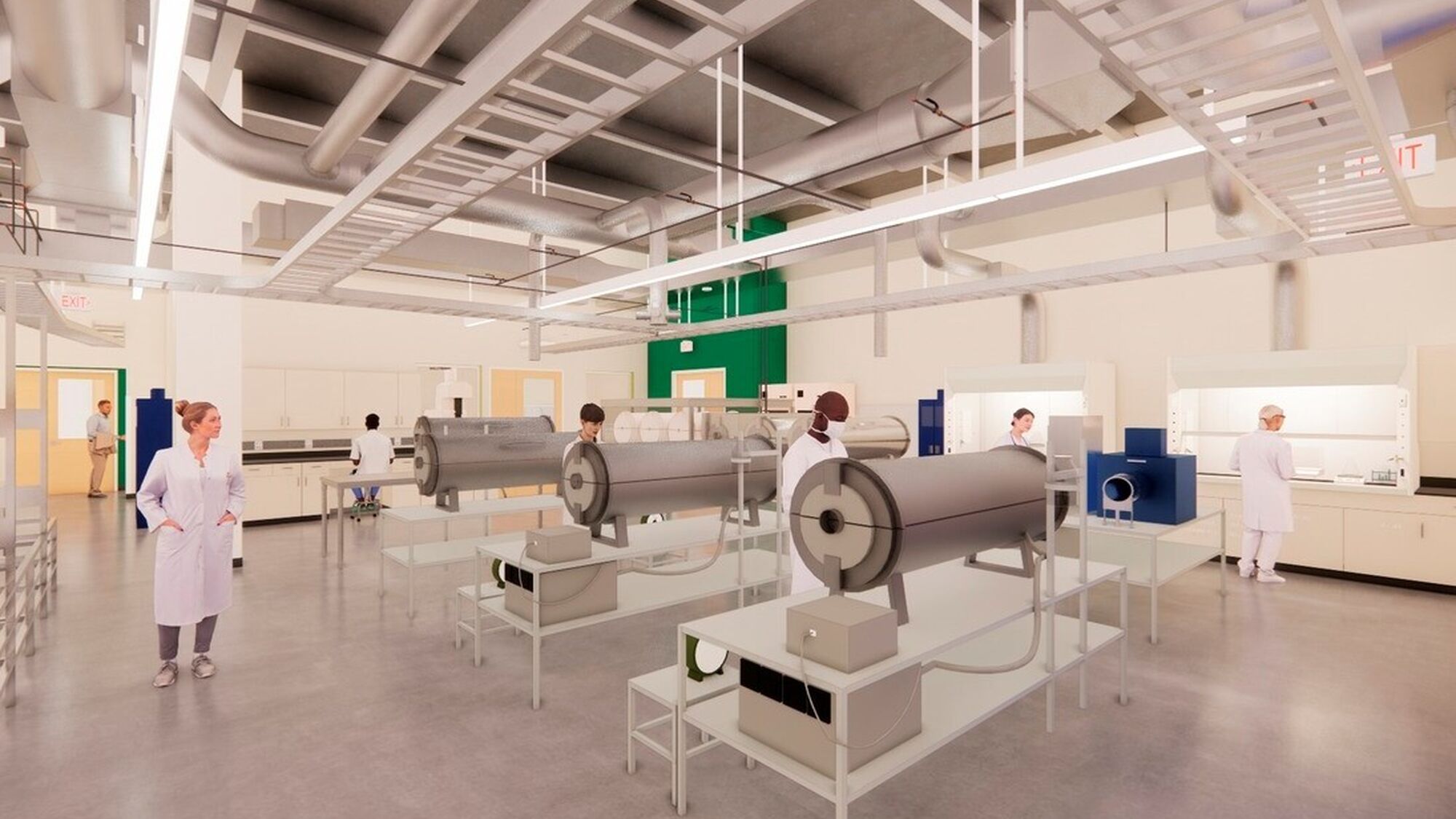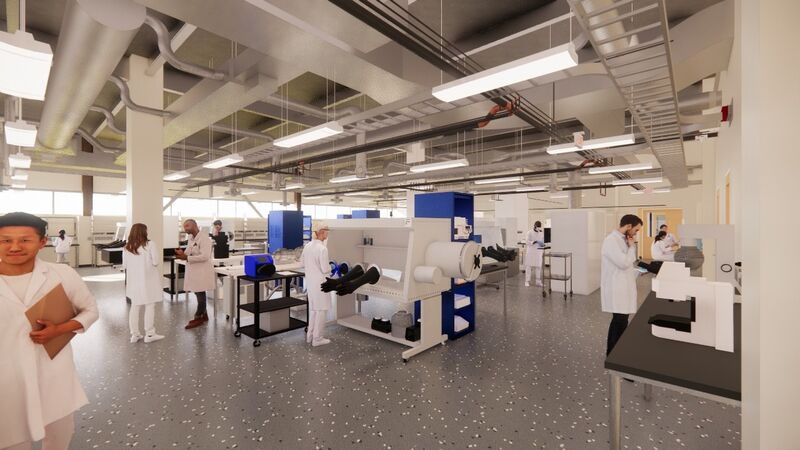
Powering the Future: Optimizing Facilities for Lithium-Ion Battery Research & Development
Lithium is to energy what silicon is to microelectronics.
Just as the 1950s-era invention of the integrated circuit revolutionized modern computing, the development of lithium-ion (Li-ion) battery technology is accelerating energy optimization. Disruptive change is occurring at all scales — residential, commercial, and industrial — deployed for both stationary and vehicular applications.
Significantly, this step-change in energy storage is allowing renewable energy sources to shine while ushering the automobile beyond the age of iron and combustion and into a new era of strong/lightweight materials (carbon fiber, aluminum, plastics) and electricity.
In addition to enabling an array of novel technologies and applications, the pace of Li-ion battery innovation has sparked new demands for laboratories, manufacturing, and testing.
Between 2020 and 2010, lithium consumption has increased by nearly 50 percent. Source: USGS, 2010, 2021
While academia, national laboratories, and the private sector are moving quickly to meet these needs, the elemental properties of lithium (a water-reactive chemical), its inherent nature as an energy storage device, and the phenomena of thermal runaway have created new challenges for occupant safety, energy use, and environmental stewardship.
Speaking on this critical topic at last year’s I2SL Annual Conference, AEI Principals Dave Sereno, PE, LEED AP, and Kevin Krause, PE, LEED AP, highlight the peculiar nature of Li-ion batteries and how to optimize laboratory, manufacturing, and testing facilities.
As we continue our quest to harness the full power of this pioneering technology, our ability to innovate is rooted in an understanding of the physical and electrochemical sciences comprising modern battery devices. So, let’s begin with the basics.
Battery and Electricity 101
What is a battery? Simply put, batteries are devices used to store and deliver electric power. Key components include:
- Battery Cell: A single anode and cathode separated by electrolyte used to produce a voltage and electric current.
- Battery Module: A group of individual cells connected electrically in a series, parallel, or both.
- Battery Pack: Final shape of a battery system including multiple modules, cooling system, and battery management system, configured in a series or parallel.
Illustration depicting a battery cell, module, and pack.
Batteries come in three major forms — cylindrical, pouch, and prismatic.
From residential to industrial applications, batteries come in a wide range of shapes and sizes. Three major forms exist:
- Cylindrical: As one of the first battery types to be mass-produced — and most popular — cylindrical cell batteries are comprised of sheet-like anodes, separators, and cathodes that are sandwiched, rolled up, and then packed into a cylinder-shaped can. Or, in other words, batteries with ideal mechanical stability for use in automated manufacturing.
- Pouch: Recognized for their simplicity and spatial efficiency, pouch cells eliminate the use of metal enclosures — offering a lightweight, malleable alternative to their cylindrical and prismatic counterparts. Most often used in large packs for electric vehicles, the pouch cell’s flexible nature requires proactive precautions to mitigate extreme swelling and pressure-related damage.
- Prismatic: Offering a similar chemical makeup as cylindrical batteries, the large sheets of anodes, cathodes, and separators comprising prismatic cells are packed into a cubic form — offering small-size flexibility through a layered approach. Though favored for their space utilization and small-scale settings — including laptop, tablet, and smartphone applications — prismatic cells are often expensive to produce and pose thermal management challenges.
Periodic table of elements highlighting lithium and its electrochemical properties.

Given the highly sensitive nature of lithium, all research and development activities must be conducted through glove boxes. Rendering courtesy of RS&H.
Illustration highlighting common elements comprising a battery testing laboratory.
AEI provides in-depth process hazards analysis (PHA) through the following areas of expertise:
- National Fire Protection Association Standard for the Installation of Stationary Energy Storage Systems (NFPA 855) requirements, from exhaust ventilation and spill containment to separation distances and signage
- High-hazard (Group H) occupancy classification requirements and limitations outlined by the International Building Code (IBC) and International Fire Code (IFC)
- Fire/explosion relief and prevention strategies, from understanding the water-reactive enigma to implementing Class D fire lighting solutions
- PHA documentation, including HAZOP, FMEA, and LOPA
When it comes to manufacturing, all materials (thousands of cells and hundreds of modules) are assembled and arranged into single battery packs. Given the large volumes of materials flowing throughout, these facilities require added levels of perimeter safety, including ISO 7 cleanrooms with advanced HEPA filtration and dry rooms with dew points ranging from minus 30 degrees Celsius to minus 65 degrees Celsius.
Like manufacturing, testing environments must be highly controlled as they expose battery components (cells, modules, and packs) to extreme conditions and real-world scenarios, allowing us to observe, analyze, and enhance operational performance and current protective measures. Common abuse testing types range from standardized puncture tests to anti-runway quench tanks for monitoring temperature cycling in battery packs.
This fire containment cart helps mitigate abuse testing hazards while maximizing occupant safety.
Regardless of type, all battery-related research and development facilities share a core commonality as extremely sensitive scientific environments that require the highest level of design quality and accuracy. As demonstrated leaders within our field, AEI’s innovative solutions help ensure:
- Mechanical and electrical system redundancy
- Process engineering and equipment integration
- Electrolyte solvent recovery and exhaust abatement
Looking for help on your next battery-related project? Reach out to Kevin today.
Cover image/rendering courtesy of RS&H.
“Lithium is to energy what silicon is to microelectronics.”





